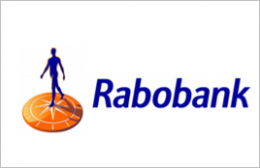
Case Study: RABOBANK
Challenge
We began our work together in August 2016, when Peter Knoblanche, the new CEO of Rabobank Australia Ltd. and MD of Rabobank ANZ Region had recently been promoted into the role. His passion was to bring the compelling purpose, “to enable our clients to feed the world and sustainably achieve their goals and aspirations” and vision “to be recognised as the leading bank in the food and agribusiness sector” to life.
The challenge for the organisation was to achieve these aspirations while implementing a significant program of identified cost reductions, remaining “in control of risks” and ensuring that the business was set up for growth and sustainable success in the future.
Peter felt strongly that he needed to change the Rabobank culture and build a more agile, values aligned organisation. He knew that he would need to upskill people’s capabilities and standards of behaviour in order to achieve this. In the rapidly changing financial services world and radically evolving regulatory environment, he wanted a guarantee of successful transformation – TAP provided that guarantee.
Solutions
As a starting point, we embarked on a 3-month diagnosis, to understand the exact nature of Rabobank’s gaps to its aspiration.
Our first stream of alignment work involved increasing strategic clarity by making the vision more measurable and the strategy more specific. This was an essential focus to unite everyone at Rabobank, and ensure a consistent view of what to do to achieve the aspirations.
Despite an initial sense from some leaders that the different countries (AU/NZ) and functions were too diverse and independent to form a shared strategy, this work was undertaken with great success. Six clear strategic priorities were identified, highlighting critical strategic focus areas and providing for a far more innovative, future oriented focus – a basis for being recognised as a “leading bank” in the sector.
Once this work was complete, the next step was to create a business scorecard to match the strategy, and embed it in the operating rhythm of the business. This provided clear measures of success and gave the Executive Team one source of truth for managing the business. Weekly executive meetings, which had previously been considered a “tax” by some, were converted into monthly strategic review meetings, focused directly on progress and focus areas related to the strategy. The number of strategic initiatives were reduced, and three key, high profile projects for the business overall were recognised.
Once the strategy was clear, measurable, articulated on one page and resonating across all areas of the business (answering the question “what” will we focus on), we turned our attention to the question of “how”?
As a multinational subsidiary, Rabobank had a set of values provided by the global parent. The team worked together to turn these values into a practical set of behavioural standards. This process was an opportunity to directly shift the “culture” of the business. To this end, statements such as “ensure all action has purpose, and is as simple as possible”, “experiment to own the space” and “maintain a learning mindset” were included. These standards were added to the monthly strategic review, both as a check in at the start of a meeting, and as an assessment at the end.
Finally, we began the process of increasing the constructive leadership impact of the Executive Team. This process started with a 360˚ feedback assessment, comparing each leader’s ideal impact to their actual impact as assessed by others. We then implemented a very robust series of 1-1 and team discussions to enable identified leadership shifts. Finally, we ensured that each leader (and their leaders) had team and individual goals aligned to the aspirations and strategy.
Outcomes
Market share and financial performance has grown significantly during this period, despite the increasing challenges of the regulatory and competitive environment. Scorecard metrics remain predominantly green (including strong adherence to cost and risk targets). The key strategic initiatives are on track, and the highest profile initiative has gone live with great success.
Peter now feels he has achieved the appropriate balance between growth and control metrics, and has systemically embedded a risk management and compliance culture.
The Executive Team’s constructive impact increased at re-measure, showing striking improvements within the peer group. As a consequence, the Executive Team has become a highly respected and aligned team, characterised by increasing trust and collaboration. The team can now speak on each other’s behalf – a key factor in the increased cadence and agility being experienced at all levels of the organisation. Significantly, they are also completely aligned with the global organisation, and in demand for global roles and projects.
In recognition of the powerful shifts at executive level, the leadership transformation has been cascaded to a broader group of high potential leaders within the organisation. This has created a ‘snowball’ of leadership momentum within the organisation, improved succession planning and further accelerated cross functional awareness and collaboration. Leaders are now creating more leaders!


